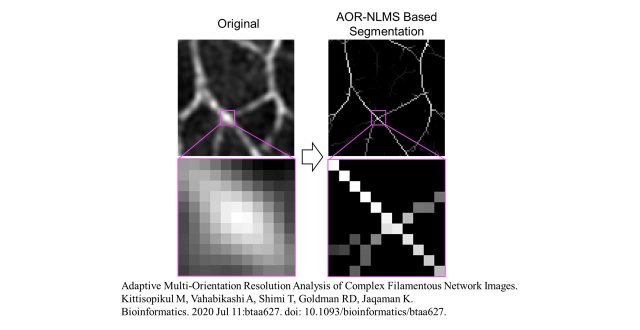
AOR-NLMS is a powerful tool for quantitative analyses of microscopic images of fibrous structures in cells
WRHI Newsおすすめ
Published
(Cell Biology Center / Dr. Takeshi Shimi)
“Adaptive multiorientation resolution analysis of complex filamentous network images ”
Bioinformatics (DOI: 10.1093/bioinformatics/btaa627)
Cellular structures including cytoskeleton and nucleoskeleton contain complex junctions of overlapping filaments with arbitrary geometry. In general, computational algorithms perform single orientation analysis to segment these structures, leading to gaps near junctions. Adaptive orientation resolution non-local maxima suppression (AOR-NLMS) is the new computational algorithm in which a non-maximum suppression (NMS) is combined with multiorientation resolution information to accurately identify the centers of lines and their junctions in a digital image. For example, structures and distributions of intermediate filaments resolved by super resolution microscopy can be quantitatively analyzed by this algorithm. Thus, this study successfully demonstrates that AOR-NLMS is a powerful tool for quantitative analyses of microscopic images of fibrous structures in cells.
For details, click here.
